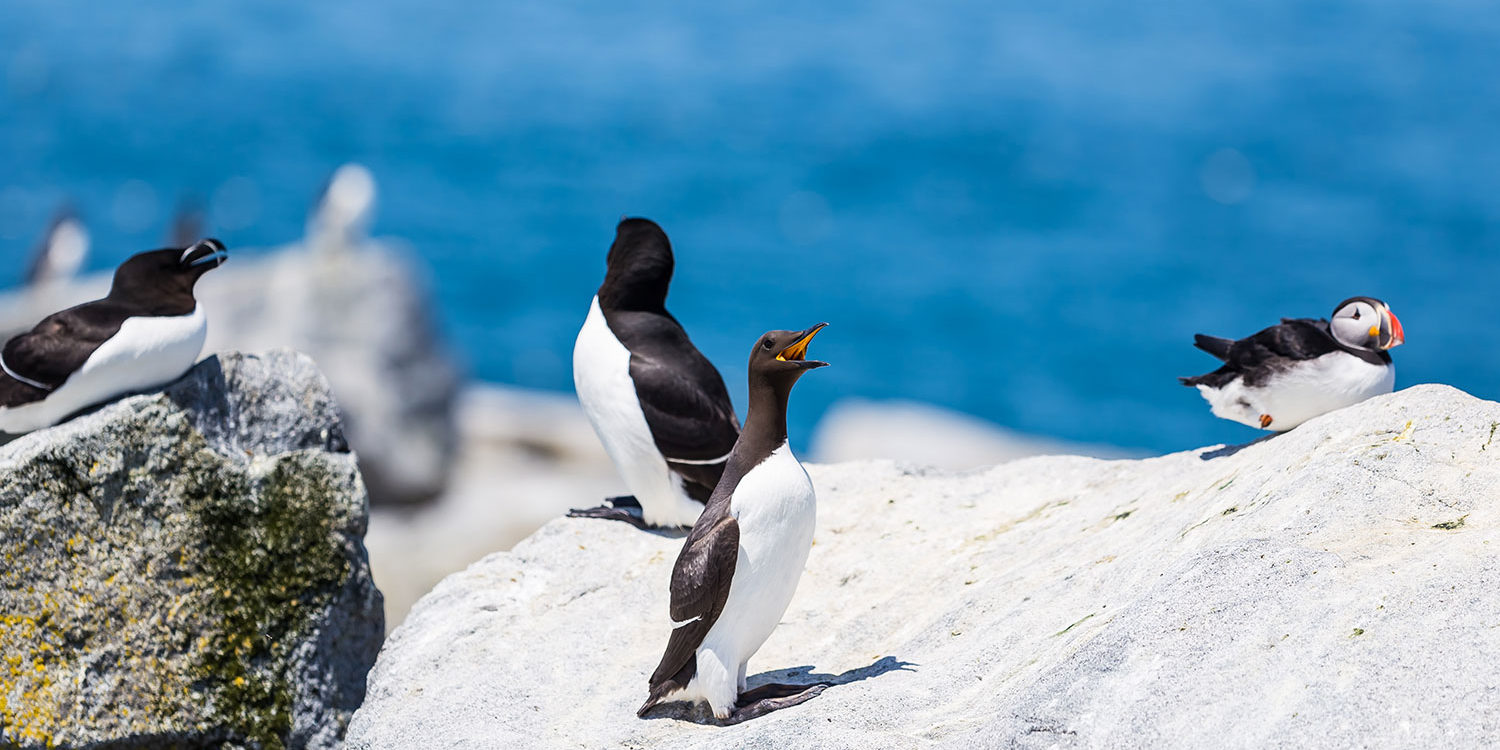The Common Murre is a black and white seabird that lives along the coastal areas of North America. They’re quite common in Maine and can be spotted along the rocky coastline and among the waves of Maine’s many coastal islands. However, this wasn’t always the case.
The Common Murre’s Return to Maine
Common Murres disappeared from Maine entirely in the 1880s after years of being hunted for their meat and eggs. They were considered extinct in the state until a small colony was discovered nesting on Matinicus Rock over 125 years later.
Since then, Project Puffin and their partners from the Maine Coastal Islands National Wildlife Refuge have been working diligently to bring the Common Murre back to Maine. Today, their population continues to increase, and they can now be found along Maine’s coast once again.
These fascinating birds are worth a trip to Maine to see for yourself. Here are a few interesting facts about the Common Murre that may surprise you.
One-of-a-Kind Eggs
The Common Murre is known for its uniquely colored and patterned eggs, which feature variable patterns of blotches and spots. They range in color from a black-speckled stark white to variations of teal and turquoise. Each egg has its own unique color and speckle pattern to help the parents identify which egg is theirs.
Not only are Common Murre eggs uniquely colored, but they’re also oddly shaped. The eggs are shaped more like a teardrop than a traditional oval shape.
This is because Common Murres do not make protective nests for their eggs but instead lay them directly on the rocky cliffs. This unique shape helps prevent the egg from rolling off the cliff side.
The Common Murre’s Unique Appearance
The Common Murre is a member of the auk family. They’re closely related to penguins and are sometimes even mistaken for them from afar due to their black and white plumage. However, they’re actually much smaller than penguins and have a few key physical differences.
One of the most noticeable differences is the distinct white eye-ring that is found in the North Atlantic Common Murre population. This unique feature extends to the back of the head and creates the appearance of a white halo with an extended tail.
Deep Sea Divers
Common Murres are excellent swimmers and can dive up to 100 feet in search of food. However, they’re capable of diving much deeper than that. The deepest recorded dive of a Common Murre was 550 feet!
Living off a diet of small fish, squid, crustaceans, and mollusks, these birds spend most of their time at sea. In fact, they only come to shore to mate and lay their eggs.
Visit Maine and See the Common Murre
During your next visit to Maine, be sure to schedule a tour with any of these fantastic birding tour boat operators. Keep your eyes peeled for these fascinating birds, and be on the lookout for puffins and razorbills too!
From the Friends of Maine Coastal Islands Wildlife Refuge, we hope you have a great time birding in Maine!







